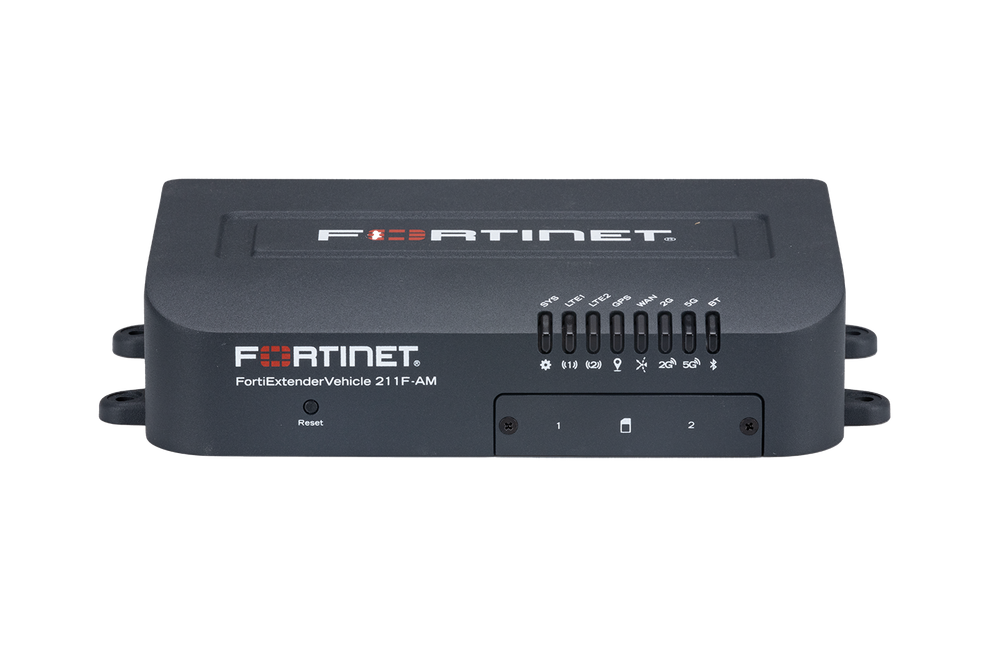
- Support Forum
- Knowledge Base
- Customer Service
- Internal Article Nominations
- FortiGate
- FortiClient
- FortiADC
- FortiAIOps
- FortiAnalyzer
- FortiAP
- FortiAuthenticator
- FortiBridge
- FortiCache
- FortiCare Services
- FortiCarrier
- FortiCASB
- FortiConverter
- FortiCNP
- FortiDAST
- FortiData
- FortiDDoS
- FortiDB
- FortiDNS
- FortiDLP
- FortiDeceptor
- FortiDevice
- FortiDevSec
- FortiDirector
- FortiEdgeCloud
- FortiEDR
- FortiEndpoint
- FortiExtender
- FortiGate Cloud
- FortiGuard
- FortiGuest
- FortiHypervisor
- FortiInsight
- FortiIsolator
- FortiMail
- FortiManager
- FortiMonitor
- FortiNAC
- FortiNAC-F
- FortiNDR (on-premise)
- FortiNDRCloud
- FortiPAM
- FortiPhish
- FortiPortal
- FortiPresence
- FortiProxy
- FortiRecon
- FortiRecorder
- FortiSRA
- FortiSandbox
- FortiSASE
- FortiSASE Sovereign
- FortiScan
- FortiSIEM
- FortiSOAR
- FortiSwitch
- FortiTester
- FortiToken
- FortiVoice
- FortiWAN
- FortiWeb
- FortiAppSec Cloud
- Lacework
- Wireless Controller
- RMA Information and Announcements
- FortiCloud Products
- ZTNA
- 4D Documents
- Customer Service
- Community Groups
- Blogs
- Fortinet Community
- Blogs
- Microsoft Ignite 2019 Recap and Lessons Learned
- Subscribe to RSS Feed
- Mark as New
- Mark as Read
- Bookmark
- Subscribe
- Printer Friendly Page
- Report Inappropriate Content
In case you were unable to attend Microsoft Ignite last week, here is what happened at the event and how to use lessons learned from this event moving forward to help your company improve security and reduce risk within your environment.
Microsoft Ignite was held in Orlando, Florida this year with professionals ranging in all industries attending. As the biggest event for Microsoft this year with upwards of 30,000 attendees attending the event. Security vendors including Fortinet attended to spread security awareness and to release updates with the company.
This year, Fortinet's key messages for the event was Connect, Protect, Integrate, and Deliver.
With Connect, Fortinet partnered with Microsoft Azure to integrate Microsoft's Azure Virtual WAN solution to help deliver end to end secured connection. By automating tedious tasks like VPN tunnel configurations and routing configurations, organizations can operate more efficiently and reduce risk of human misconfiguration. With enterprises looking to compete effectively and developers having to have a faster release cycle on their products, organizations need a solution that would help them hasten their production, rather than act as a chokepoint. With FortiGate's integrated SD-WAN solution, organizations can have dynamic path selection, secure connectivity to Microsoft's Office 365, application and packet steering, and advance threat protection for their branch offices. Organizations can use Microsoft's Azure Virtual WAN solution in conjunction with FortiGate to deliver SD-WAN and secure WAN connection to Microsoft Azure. Organizations looking for a single pane of glass management can use Microsoft's Azure Virtual WAN to simplify WAN management and use Fortinet's FortiGate solution to enable granular security control, automated remediation, and secure connectivity between on premise, cloud, and between branch offices. Combined together, Fortinet's FortiGate solution with Microsoft's Azure Virtual WAN solution improve an organization's Quality of Experience (QoE) by delivering award-winning security performance and complete security connection.
Customers Looking to migrate more of their infrastructure to the cloud should look at the solution to disentangle complex traditional implementations of WAN connections. Customers currently having workloads in Microsoft Azure and other cloud vendors could use FortiGate with Azure's Virtual WAN to architect a multi-cloud connection to their on premise and branch offices to simply connection management, enable SLAs, improve resiliency, as well as enable automated and security driven networking.
To learn more about this solution, please click here to learn about our integration with Microsoft's Azure Virtual WAN
At the event, Fortinet also announced a new solution called FortiCWP. FortiCWP provides cloud security posture and gives workload protections for your cloud domain. With Microsoft announcing Azure Arc, organizations can now manage their servers, virtual machines, and Kubernetes clusters on any cloud, any infrastructure, on any edge. As the single pane of glass management idea becomes closer to reality and corporations using multi-cloud infrastructure in their architecture design, organizations should also be aware of the consequences of launching resources in a multi-cloud platform. By putting resources in multiple platforms, an organization's attack surface increases. With every launch of a resource, organizations must ensure that they receive visibility into their multi-cloud environment as well as ensuring that alerts and remediation steps are implemented to reduce the risk for human error. With Microsoft Arc, the infrastructure is in place to manage cloud resources from any location. However, visibility, compliance, and security services like data analysis is still needed to ensure that the cloud resources are guarded. FortiCWP not only provides detailed compliance reporting for cloud resources to ensure compliancy with major standards like HIPPA, PCI, and more, but also give data analysis and threat detection to enable the security team to alert users about any malicious events and take action to remediate those malicious events.
As complexity grows and organizations requiring faster service for a more competitive edge, security also needs to be tied in with operations and development. Rather than being a chokepoint, security should enable organizations to effective compete without interruptions. Using a SaaS-based solution can help organizations get rid of traditional worries about patching and updating solutions and enabling them to manage day to day activities. FortiCWP gives organizations the ability to do continuous configuration assessments and prioritize vulnerabilities based on risk scores distributed to resources located by FortiCWP.
To learn more about FortiCWP, please click here
One of the things learned at Microsoft Ignite was that complexity is growing. Complexity is growing in all areas. At the conference, Microsoft did a lot of product and service announcements that covered topics like AI/Machine Learning, Analytics, Blockchain, IoT, Networking, Security, Storage, and so much more. There were 1445 sessions on the calendar covering different solutions that target different industries. With this complexity growing both on premise and cloud, organizations need a way to manage the different tools and also differentiate themselves in their market in the process. Traditional approach to launching a Web Application Firewall (WAF) is still being used by many companies, and there are still use cases for it like wanting to have the ability to control updates, having advance capabilities, and the ability to design a flexible architecture. However, for customers looking for WAF capabilities and don't want to deploy and manage virtual machines, Fortinet Web as a SaaS solution would enable companies with basic requirements to secure their web applications. FortiWeb SaaS defend web applications against known and zero-day threats enabling rapid application deployments while still address compliance requirements. With FortiWeb SaaS, you no longer need to manage virtual machines and worry about patching updates to those virtual machines on Microsoft Azure. Additionally, by launching FortiWeb SaaS , customers can enjoy award-winning threat intelligence gathered from Fortinet's FortiGuard to protect mission critical applications and safeguarding them from vulnerability exploits. Customers wanting same-region compliance and lower TCO benefits can deploy FortiWeb SaaS. With more and more businesses moving to the cloud, having a SaaS based solution like FortiWeb simplify security management and give administrators new to deploying WAFs an easy way to create and manage WAF policies.
To learn more about FortiWeb Cloud WAF as a Service (FCWaaS), please click here
Finally, one of the big announcements Microsoft did this year was the release of Endpoint Manager. Endpoint Manager combines System Center Configuration Manager (SCCM) with Intune to help enterprises migrate to a modern workspace by enabling them to manage their endpoint devices from the cloud. As more offices move towards this modern workspace and modern management concept where a lot of solutions and services are offered on the cloud, companies should also take the necessary steps to secure their environment. This include taking the basic security steps like enabling MFA and using an Identity Provider like FortiToken and strong password enforcements on endpoints. VPN connections should also be required when employees access internal resources from a non-corporate network. With the evolution of workspaces and concepts like BYOD gaining popularity, organizations need to adopt quickly and implement security in domains that typically did not require corporate security. Additionally, organizations need solutions like a Network Access Control (NAC) that would help give them visibility and control over devices in their environment. With FortiNAC, enterprises can apply micro-segmentation and automate onboarding process for large registrations of endpoints, users, and guests. Using FortiNAC's integration with Intune, you can pull information from Intune to FortiNAC and apply NAC policies for mobile devices. Devices with FortiClient, Fortinet's Endpoint Security solution, can integrate with FortiNAC where devices registered would be sent to FortiNAC using host data gathered from those devices. Devices that are AD-enabled with FortiClient installed can enjoy the benefits of micro-segmentation and granular policy control. Combined with FortiNAC's integration with Microsoft's Intune, enterprises can deliver fast on-boarding while still securing their networks according to corporate guidelines.
To learn more about FortiNAC's integration with Microsoft Intune, please click here.
As more and more organizations move to cloud-based products and services, they need to understand to use security that seamlessly work in those environments and are built for those environments. With the release of different products announced at Microsoft Ignite this year, organizations also need to realize the increase surface of attack that comes with these product releases. With the trend being to move to a modern workspace meaning more cloud based applications, security also needs to be modern. Built with security in mind, Fortinet can help customers provide security at the speed of development and drive for maximum security return. Fortinet is a global leader in cybersecurity, delivering end to end security that enable corporate development while still securing their environment. We are a security driven networking company providing mobile, endpoint, cloud, and network security with deep integrations into a large partner community.
To join our FUSE community, please click here.
Subscribe to our Youtube community here!
You must be a registered user to add a comment. If you've already registered, sign in. Otherwise, register and sign in.
The Fortinet Security Fabric brings together the concepts of convergence and consolidation to provide comprehensive cybersecurity protection for all users, devices, and applications and across all network edges.
Copyright 2025 Fortinet, Inc. All Rights Reserved.
